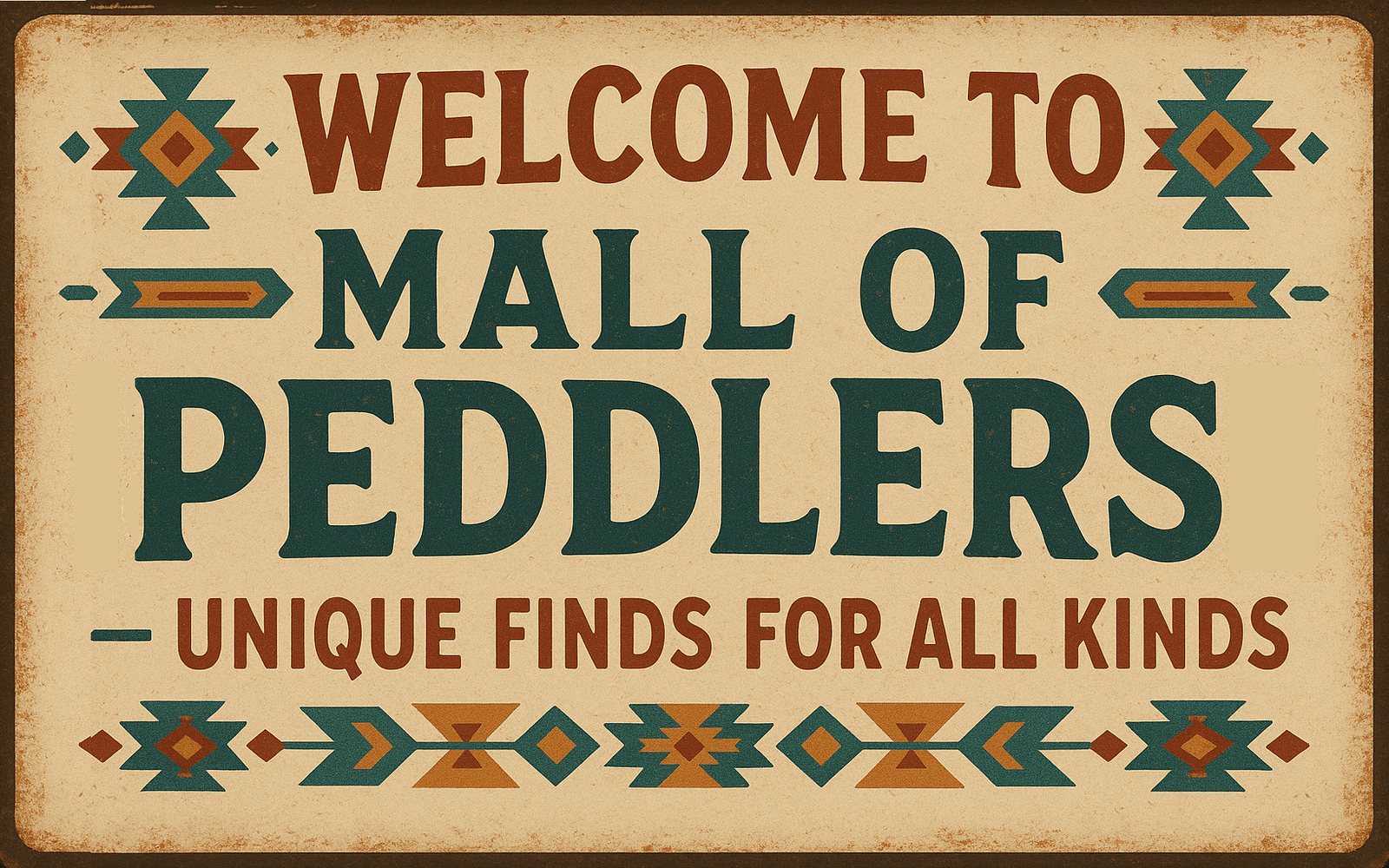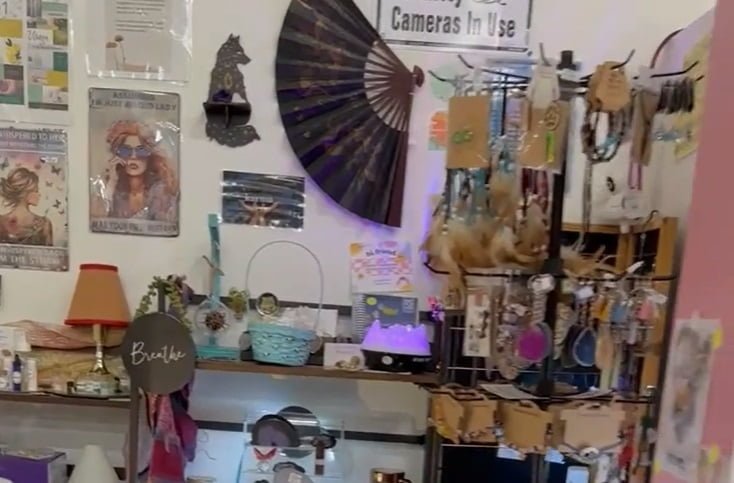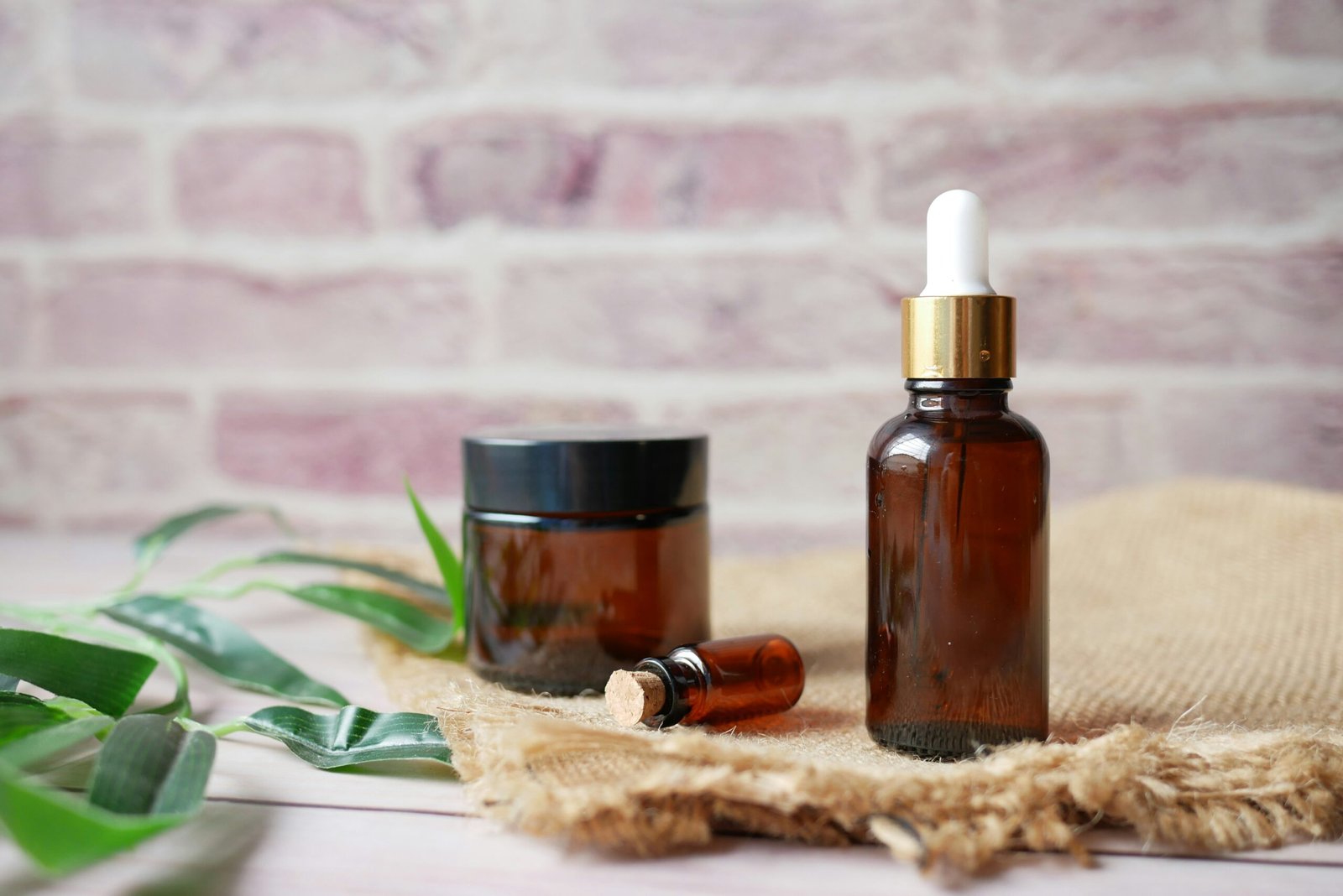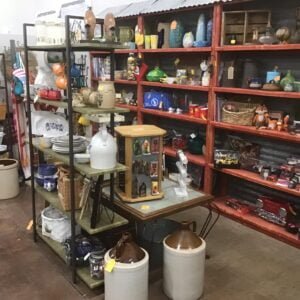10 Free Marketing Ideas to Promote Your Booth in the Mall of Peddlers
One of the most effective ways to promote your booth in the Mall of Peddlers is by leveraging the power of social media. With the increasing popularity of platforms like Facebook, Instagram, and Twitter, it has become easier than ever to reach a large audience without spending a fortune on advertising.
Start by creating social media accounts for your booth and regularly posting engaging content that showcases your products or services. Use high-quality images and videos to grab the attention of potential customers and make them curious about what you have to offer. You can also use social media to run contests or giveaways, encouraging people to visit your booth and participate in the excitement.
In addition to social media, another effective way to promote your booth is by collaborating with other businesses in the mall. Look for complementary products or services that align with your target audience and reach out to the owners or managers to discuss potential partnerships.
For example, if you are selling handmade jewelry, you could collaborate with a clothing store to create a special promotion where customers who purchase a certain amount of clothing receive a discount on your jewelry. This not only helps you attract new customers but also allows you to tap into the existing customer base of the partnering business.
Furthermore, don’t underestimate the power of word-of-mouth marketing. Encourage your satisfied customers to spread the word about your booth to their friends and family. Offer incentives such as referral discounts or freebies to customers who bring in new customers. By creating a positive and memorable experience for your customers, you increase the likelihood that they will recommend your booth to others.
Lastly, take advantage of the physical space around your booth to attract attention. Use eye-catching signage, banners, and displays to stand out from the crowd. Consider offering interactive experiences or demonstrations to engage potential customers and pique their interest. The more unique and memorable your booth is, the more likely people will be to stop by and see what you have to offer.
In conclusion, promoting your booth in a busy mall like the Mall of Peddlers doesn’t have to break the bank. By leveraging the power of social media, collaborating with other businesses, encouraging word-of-mouth marketing, and creating an attention-grabbing physical space, you can effectively promote your booth and attract customers without spending a fortune.
In addition to creating accounts on popular social media platforms, you can also leverage the power of influencers to promote your booth in the Mall of Peddlers. Identify influencers in your niche who have a significant following and engage with their audience. Collaborate with them to create sponsored posts or stories featuring your products. This can help you reach a wider audience and increase brand awareness.
Another effective social media marketing strategy is to run contests and giveaways. This can generate excitement and buzz around your booth. Encourage participants to like, share, and comment on your posts to enter the contest. This not only increases engagement but also helps spread the word about your products and booth in the Mall of Peddlers.
Furthermore, consider using social media advertising to reach a targeted audience. Platforms like Facebook and Instagram offer robust advertising options that allow you to define your target audience based on demographics, interests, and behavior. This can help you reach potential customers who are more likely to be interested in your products and visit your booth.
Don’t forget to track the performance of your social media marketing efforts. Use analytics tools provided by the platforms to measure the reach, engagement, and conversions generated through your social media campaigns. This data can provide valuable insights into the effectiveness of your strategies and help you make informed decisions for future marketing efforts.
2. Collaborate with Influencers
Influencer marketing can be a highly effective way to promote your booth in the Mall of Peddlers. Identify influencers in your niche who have a significant following on social media. Reach out to them and propose a collaboration. Offer them a free product or service in exchange for a shoutout or review on their social media platforms. This can help you reach a wider audience and generate buzz around your booth.
3. Create Engaging Content
Create engaging and informative content related to your booth and products. This can be in the form of blog posts, videos, or infographics. Share this content on your website and social media platforms. Optimize your content for search engines by including relevant keywords and meta tags. This will help improve your visibility in search engine results and attract organic traffic to your booth in the Mall of Peddlers.
Another effective strategy to attract customers to your booth in the Mall of Peddlers is to offer exclusive discounts and promotions. People are always on the lookout for a good deal, and by providing them with special offers, you can entice them to visit your booth and make a purchase.
One way to implement this strategy is by creating limited-time offers. By setting a specific time frame for the discount or promotion, you create a sense of urgency and encourage customers to take advantage of the deal before it expires. This can create a buzz around your booth and attract a larger crowd.
In addition to limited-time offers, you can also offer special discounts for customers who visit your booth. For example, you can provide a certain percentage off on specific products or offer a buy one, get one free deal. These types of promotions not only incentivize customers to make a purchase, but they also give them a sense of exclusivity, as the discount is only available at your booth.
To ensure that your exclusive discounts and promotions reach a wider audience, it’s important to promote them through various channels. Start by advertising these offers on your website, prominently displaying them on the homepage or creating a dedicated section for promotions. This will make it easy for visitors to your website to find and take advantage of the discounts.
Furthermore, leverage the power of social media platforms to spread the word about your promotions. Create eye-catching posts and share them on platforms like Facebook, Instagram, and Twitter. Encourage your followers to share the post with their friends and family, increasing the reach of your promotions.
Lastly, don’t forget about the power of email marketing. Send out regular newsletters to your subscribers, highlighting the exclusive discounts and promotions available at your booth. Make sure to clearly communicate the terms and conditions of the promotions, including any restrictions or limitations, to avoid any confusion.
By offering exclusive discounts and promotions, you not only attract customers to your booth in the Mall of Peddlers, but you also create a sense of excitement and urgency. This can lead to increased foot traffic, higher sales, and ultimately, a successful presence at the mall.
Not only can hosting a giveaway generate excitement and attract attention to your booth in the Mall of Peddlers, but it can also serve as a powerful marketing tool to increase brand awareness and engage with potential customers. When deciding on a prize for your giveaway, it’s important to choose something that is not only desirable but also relevant to your products or services. This will ensure that you attract participants who are genuinely interested in what you have to offer.
Once you have chosen a prize, it’s time to promote the giveaway on your social media platforms. Utilize the power of social media by creating eye-catching graphics or videos that showcase the prize and encourage participation. Be sure to clearly communicate the rules and entry requirements, such as liking, sharing, and tagging friends in the comments. This will not only increase your reach and visibility but also create a sense of urgency and FOMO (fear of missing out) among your audience.
When promoting the giveaway, consider leveraging the power of influencers or partnering with other local businesses to expand your reach even further. Collaborating with influencers who have a strong following in your target market can help amplify your message and attract participants who may not have been aware of your brand previously. Additionally, partnering with other businesses in the Mall of Peddlers can create a sense of community and camaraderie, further enticing potential customers to participate in your giveaway.
It’s important to note that when hosting a giveaway, you must comply with the rules and regulations of the platform you are using. Different social media platforms have different guidelines for giveaways, so be sure to familiarize yourself with these rules to avoid any potential issues. Additionally, consider consulting with a legal professional to ensure that your giveaway is compliant with local laws and regulations.
Lastly, don’t forget to follow up with participants after the giveaway has ended. Whether it’s announcing the winner publicly or sending a personalized thank-you message to all participants, this follow-up communication helps to solidify your brand’s reputation and foster a positive relationship with your audience. It also provides an opportunity to promote any upcoming events or promotions that may be of interest to your participants.
In conclusion, hosting a giveaway can be a highly effective strategy to generate excitement, attract attention, and increase brand awareness in the Mall of Peddlers. By carefully selecting a desirable prize, promoting the giveaway on social media, leveraging influencers and partnerships, complying with platform rules and regulations, and following up with participants, you can maximize the impact of your giveaway and create a lasting impression on potential customers.
6. Partner with Other Booths
Collaborating with other booths in the Mall of Peddlers can be a smart strategy to enhance your business presence and attract more customers. When identifying potential partners, it’s important to choose booths that offer products or services that complement yours or target a similar audience. This way, you can create a synergy that benefits both parties.
Once you have identified potential partners, it’s time to reach out to them and propose a partnership or cross-promotion. Start by highlighting the mutual benefits that can be gained from working together. For example, you can explain how partnering with your booth can provide their customers with a more comprehensive shopping experience, or how their products can add value to your offerings.
One way to collaborate with other booths is by offering to display each other’s promotional materials. For instance, if you are selling handmade jewelry, you can showcase brochures or business cards from a booth that specializes in unique clothing or accessories. This way, customers who visit your booth may also be interested in checking out the other booth, and vice versa.
Another effective strategy is to create joint marketing campaigns. By pooling your resources and marketing efforts, you can reach a wider audience and increase foot traffic to both booths. For example, you can collaborate on a social media campaign where you feature each other’s products or offer exclusive discounts when customers visit both booths.
Furthermore, consider organizing special events or workshops in collaboration with other booths. This can create a buzz around the mall and attract more visitors. For instance, if you are selling organic skincare products, you can partner with a booth that offers natural remedies or wellness services to host a skincare workshop or a wellness fair. This way, you can leverage each other’s expertise and attract a larger audience.
Remember, the key to successful partnerships is to ensure that both parties benefit from the collaboration. Before entering into any partnership, discuss your goals, expectations, and how you can support each other’s businesses. By working together, you can create a win-win situation that not only boosts your booth’s visibility but also strengthens the overall appeal of the Mall of Peddlers.
Email marketing is not only cost-effective, but it also allows you to establish a direct line of communication with your target audience. By collecting email addresses from customers who visit your booth at the Mall of Peddlers or through your website, you can build a valuable database of potential customers. This database can then be used to send regular newsletters or promotional emails, keeping your audience informed about new products, upcoming events, or exclusive offers.
When it comes to email marketing, personalization is key. By addressing your recipients by their names and tailoring the content of your emails to their interests and preferences, you can significantly increase engagement and conversion rates. Additionally, make sure to include a clear call-to-action in each email, such as a link to your website or a special discount code, to encourage recipients to take the desired action.
To make the most out of your email marketing efforts, it’s important to track and analyze the performance of your campaigns. Use email marketing software or platforms that provide detailed analytics, such as open rates, click-through rates, and conversions. This data will help you understand what resonates with your audience and refine your email marketing strategy accordingly.
Furthermore, consider segmenting your email list based on various criteria, such as demographics, purchase history, or engagement level. This allows you to send targeted emails to specific groups of recipients, increasing the relevance and effectiveness of your campaigns. For example, you can send a special offer on women’s clothing to female subscribers or a discount on electronics to customers who have previously purchased tech-related products.
Remember to comply with email marketing regulations, such as obtaining consent from recipients before sending them promotional emails and providing an easy way for them to unsubscribe from your mailing list. By following these best practices, you can harness the power of email marketing to effectively promote your booth at the Mall of Peddlers and drive traffic to your business.
8. Create Engaging Signage
Eye-catching signage can attract attention and draw customers to your booth in the Mall of Peddlers. In a bustling mall filled with numerous shops and booths, it is essential to stand out from the crowd. One effective way to achieve this is by creating visually appealing signs that capture the curiosity of passersby.
When designing your signage, it is important to consider the overall aesthetic and messaging. Utilize bold colors and fonts that are easy to read from a distance, ensuring that your message is clear and concise. Incorporating your branding elements not only creates a cohesive look but also helps to establish brand recognition among potential customers.
Strategic placement of your signage is crucial to maximize visibility. Consider the flow of foot traffic in the mall and position your signs in areas where they are most likely to catch the attention of shoppers. This could be near entrances, at intersections of major walkways, or in high-traffic areas where people tend to pause or gather.
However, it is important to note that mall management may have specific regulations regarding signage. Before displaying your signs, familiarize yourself with the mall’s guidelines to ensure compliance. This could include restrictions on size, placement, or even the type of materials used. By adhering to these regulations, you can avoid any potential conflicts and ensure a smooth and successful presence at the Mall of Peddlers.
Remember, engaging signage is not only visually appealing but also serves as a powerful marketing tool. It can pique the interest of potential customers, convey important information about your products or services, and ultimately drive traffic to your booth. So, take the time to create compelling signage that captivates the attention of shoppers and entices them to explore what your booth has to offer.
9. Participate in Mall Events
Malls often organize events and activities to attract customers. Take advantage of these opportunities to promote your booth in the Mall of Peddlers. Participate in mall-wide sales, holiday events, or themed promotions. Offer special discounts or host demonstrations or workshops related to your products. This will help you engage with potential customers and increase awareness of your booth.
10. Provide Excellent Customer Service
One of the most effective ways to promote your booth in the Mall of Peddlers is by providing excellent customer service. Make sure your booth is well-staffed with knowledgeable and friendly employees. Train them to engage with customers, answer their questions, and provide a positive shopping experience. Word-of-mouth recommendations can be powerful, and satisfied customers are more likely to recommend your booth to their friends and family.











